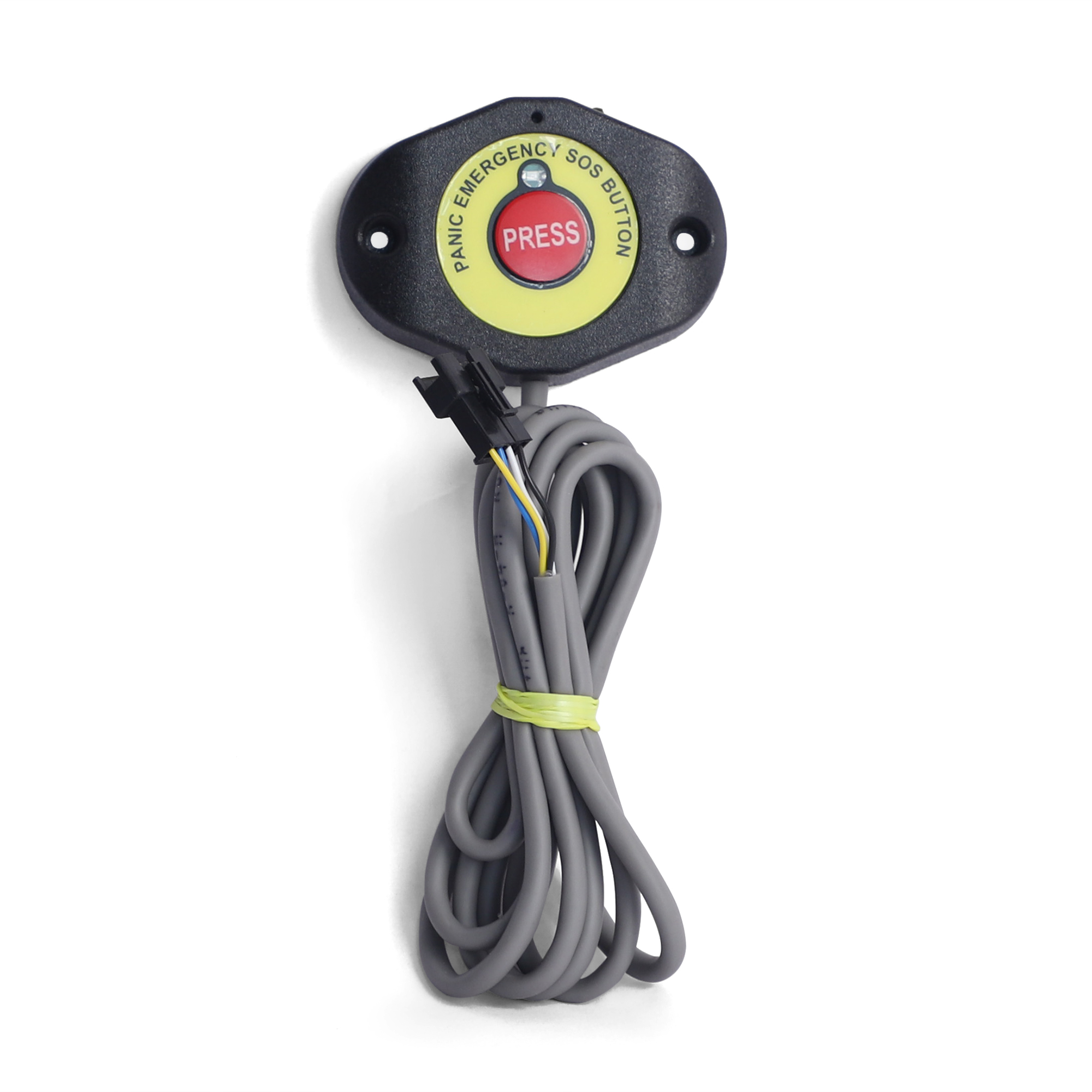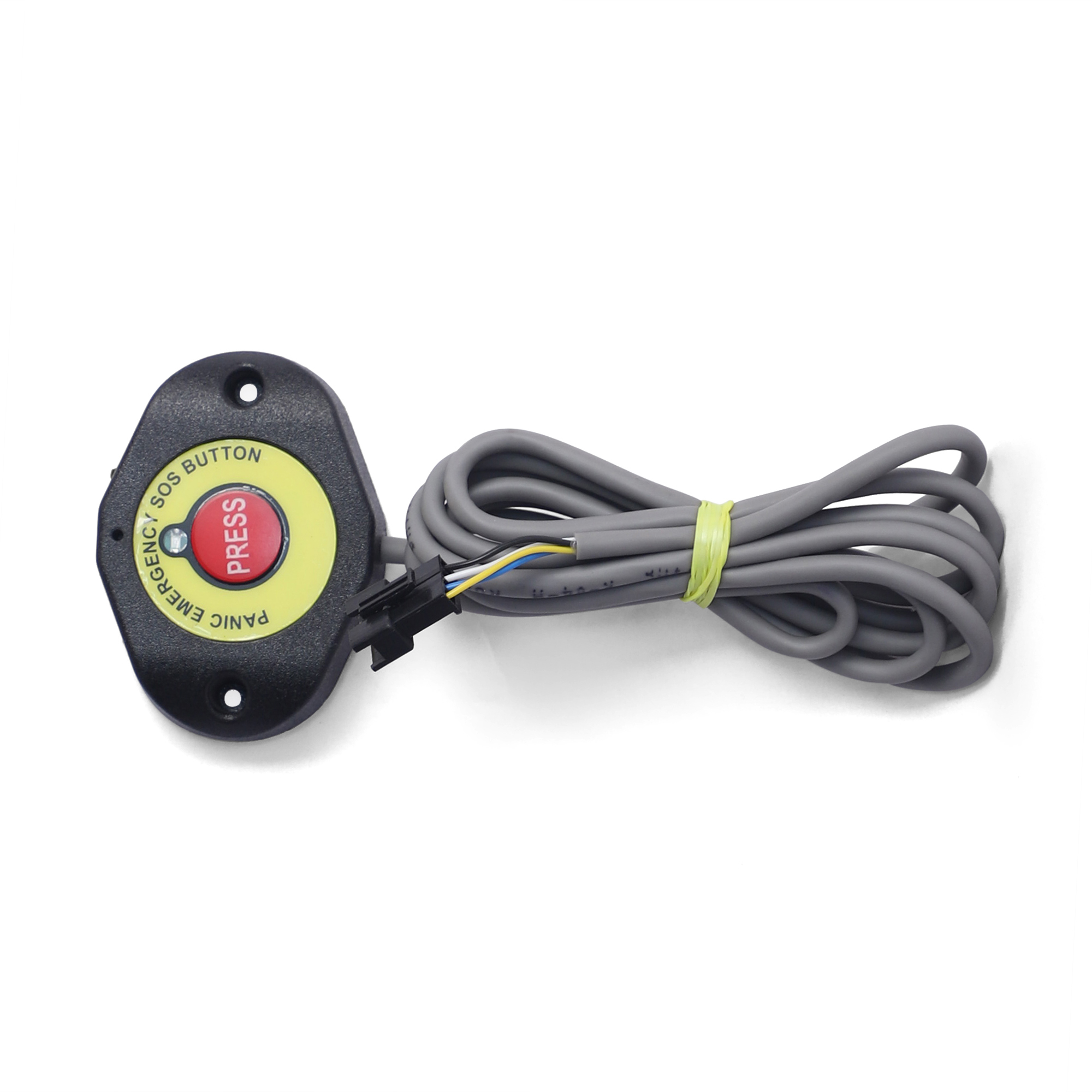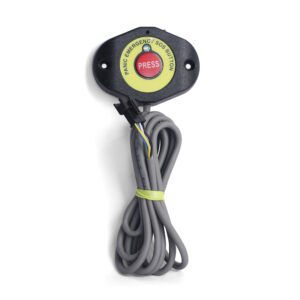Panic Button
Contact UsPanic Button
Panic buttons are a necessary and important part of AIS140 implementation. These panic buttons have been made and installed for the safety of all the passengers and drivers in the vehicle. In case of any kind of emergency, the passenger or the driver can reach the emergency information control room immediately by pressing this panic button. All panic buttons are fitted with a continuous flashing LED to indicate that the button is activated. On pressing the panic button, the LED starts flashing and the buzzer also starts sounding, along with this the device also sends an SMS about the emergency situation to the control room.
A panic button with a GPS tracker is a device that combines the functionalities of an emergency alert system and GPS tracking technology. It is designed to provide individuals with a quick and convenient way to call for help during emergencies while also transmitting their real-time location information to responders or designated contacts.
Here are the key features and benefits of a panic button with a GPS tracker:
- Emergency Alert: The panic button serves as an instant emergency alert mechanism. When pressed, it triggers an immediate distress signal, notifying emergency services, security personnel, or designated contacts about the emergency situation. The panic button is typically designed to be easily accessible and distinguishable, ensuring quick activation during high-stress situations.
- Real-Time GPS Tracking: The GPS tracker integrated with the panic button utilizes Global Positioning System (GPS) technology to accurately determine and transmit the user's location coordinates. This location information is then sent along with the emergency alert, allowing responders or contacts to pinpoint the user's exact location in real-time. This enables faster response times and enhances the chances of a successful rescue or assistance.
- Mobile Connectivity: Panic buttons with GPS trackers are often equipped with mobile connectivity options, such as cellular network support. This ensures that the emergency alerts and location data can be transmitted wirelessly to the intended recipients. The use of cellular networks enables wider coverage and accessibility compared to limited-range communication methods.
- Two-Way Communication: Some panic buttons feature two-way communication capabilities. This allows the user to communicate directly with emergency services or designated contacts, providing essential information about the situation, additional details, or instructions. Two-way communication can facilitate effective coordination, assessment of the emergency, and provision of immediate assistance.
- Geo-Fencing and Safe Zones: Panic buttons with GPS trackers may offer geo-fencing functionality, allowing users to set up virtual boundaries or safe zones. If the user moves outside of the predefined safe zone, an alert is triggered, notifying contacts or authorities about the potential risk or deviation from the designated area. Geo-fencing enhances personal safety, particularly in cases of vulnerable individuals or restricted areas.
- Battery Life and Durability: Panic buttons with GPS trackers often have extended battery life to ensure continuous functionality during emergencies. Long-lasting batteries provide peace of mind, knowing that the device will remain operational when needed the most. Additionally, these devices are typically designed to be durable and resistant to impact, water, or other harsh conditions to ensure reliability in critical situations.
- Integration with Monitoring Systems: Panic buttons can be integrated with monitoring systems or security platforms, allowing centralized management and quick response coordination. Integration enables efficient monitoring, alerts, and streamlined emergency protocols, making it easier for emergency responders or security personnel to handle distress calls effectively.
Panic buttons with GPS trackers provide a powerful safety tool for individuals in various contexts, including personal safety, lone workers, elderly care, or security operations. The combination of emergency alerts, GPS tracking, and two-way communication enhances personal safety and ensures swift response during critical situations.






